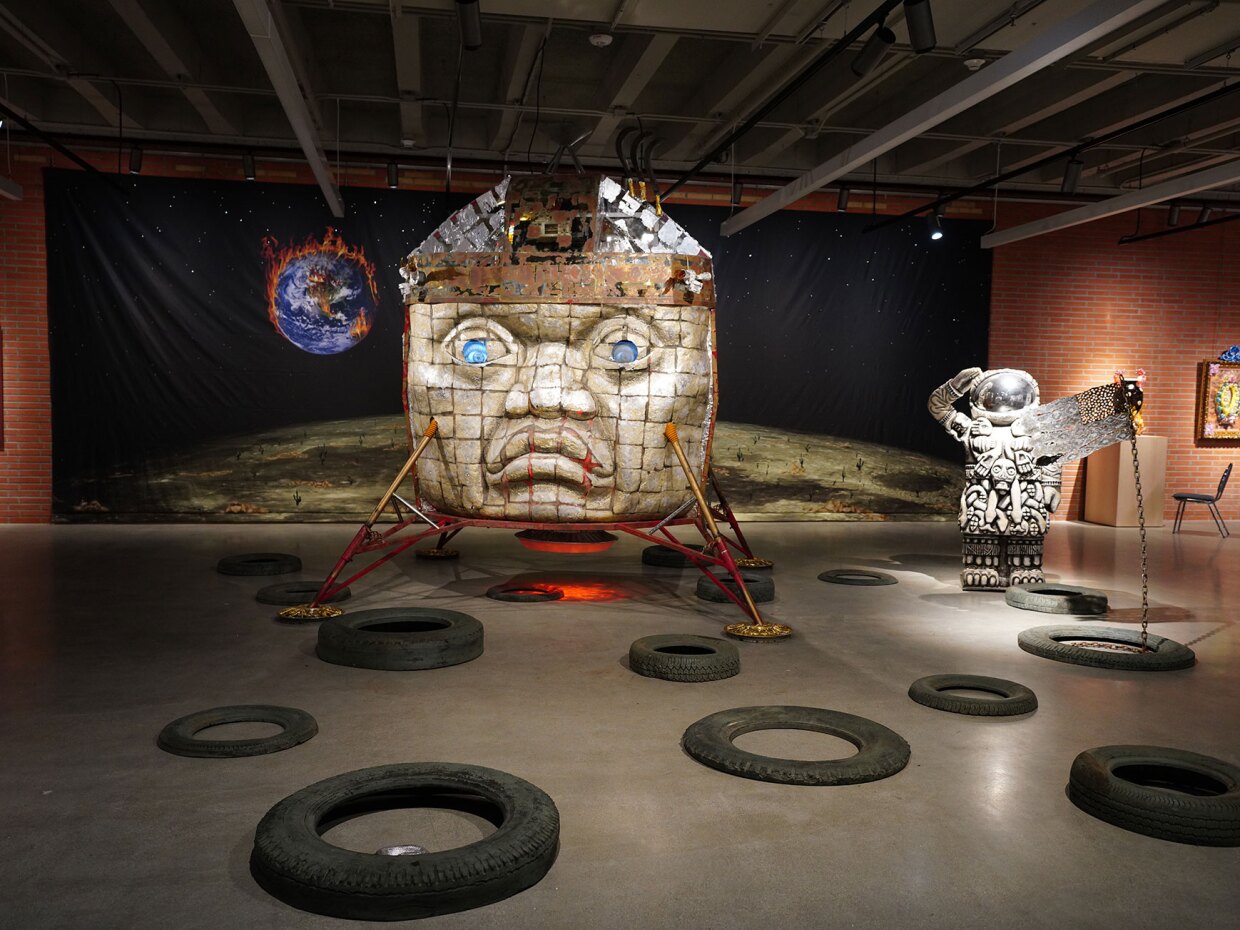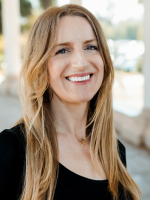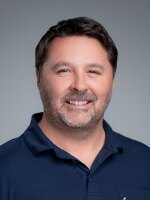The new Cheech Marin Center for Chicano Art and Culture — or The Cheech — just opened in Riverside this week. It's the first major museum dedicated to Chicano art and culture.
The inaugural temporary exhibition in the new space is a retrospective by San Diego/Tijuana artists Einar and Jamex de la Torre, known as the de la Torre Brothers.
The exhibition, "Collidoscope: de la Torre Brothers Retro-Perspective" spans nearly three decades of work and dozens of mixed-media pieces. The exhibition is on view through January.

Marin also commissioned a massive, glowing, lenticular installation by the brothers — more on what the de la Torre Brothers' lenticular art looks like is below. It spans two stories and greets visitors as they enter the museum.
San Diegans may know the de la Torre Brothers' work from their whimsical, intricate and colorful installation in the San Diego downtown library's main elevator shaft. The elevator installation is indicative of their surreal, lenticular style, as well as the use of a blend of nostalgia and myth.
At Saturday's grand opening, Marin emphasized the significance of the space.
"My heart is swelling at this point. This is a dream that I’d never dared dream: having a museum dedicated to Chicano Art. It’s the very first one in the world and you should be very proud," Marin told the crowd.
In addition to the de la Torre Brothers' exhibition, also on view will be "Cheech Collects," more than 120 works from Marin's personal collection.
Einar and Jamex de la Torre joined KPBS Midday Edition to discuss the work. The conversation below has been lightly edited for clarity.
Q: 'The Cheech' has been in the making for a long time. What was it like to be there for the grand opening this weekend?
Einar: Well, it was fruition after being involved with this project for so many years. It originally started with the National Latino Center from the Smithsonian, and then Cheech picked it up from there. So it's dovetailed, but we're thrilled.
Jamex: It's a pretty gigantic honor for us to be the first exhibition for the Cheech museum, a brand new museum and a brand new wing of the Smithsonian too. So it's a double-edged effort here that brought this to fruition, and we feel very, very honored.
Q: Can you talk about your work that is currently featured in The Cheech?
Einar: Well, it's almost 30 years, a retrospective that has taken a long time to compile. So we've been really busy this year — some old installations that we have not installed in a decade. So it's been really interesting to pull out old work and how we feel — you sort of get to look at how you feel about the work you made 20 years ago, or 10 years ago. And it's a strange feeling seeing your career sort of displayed like that.
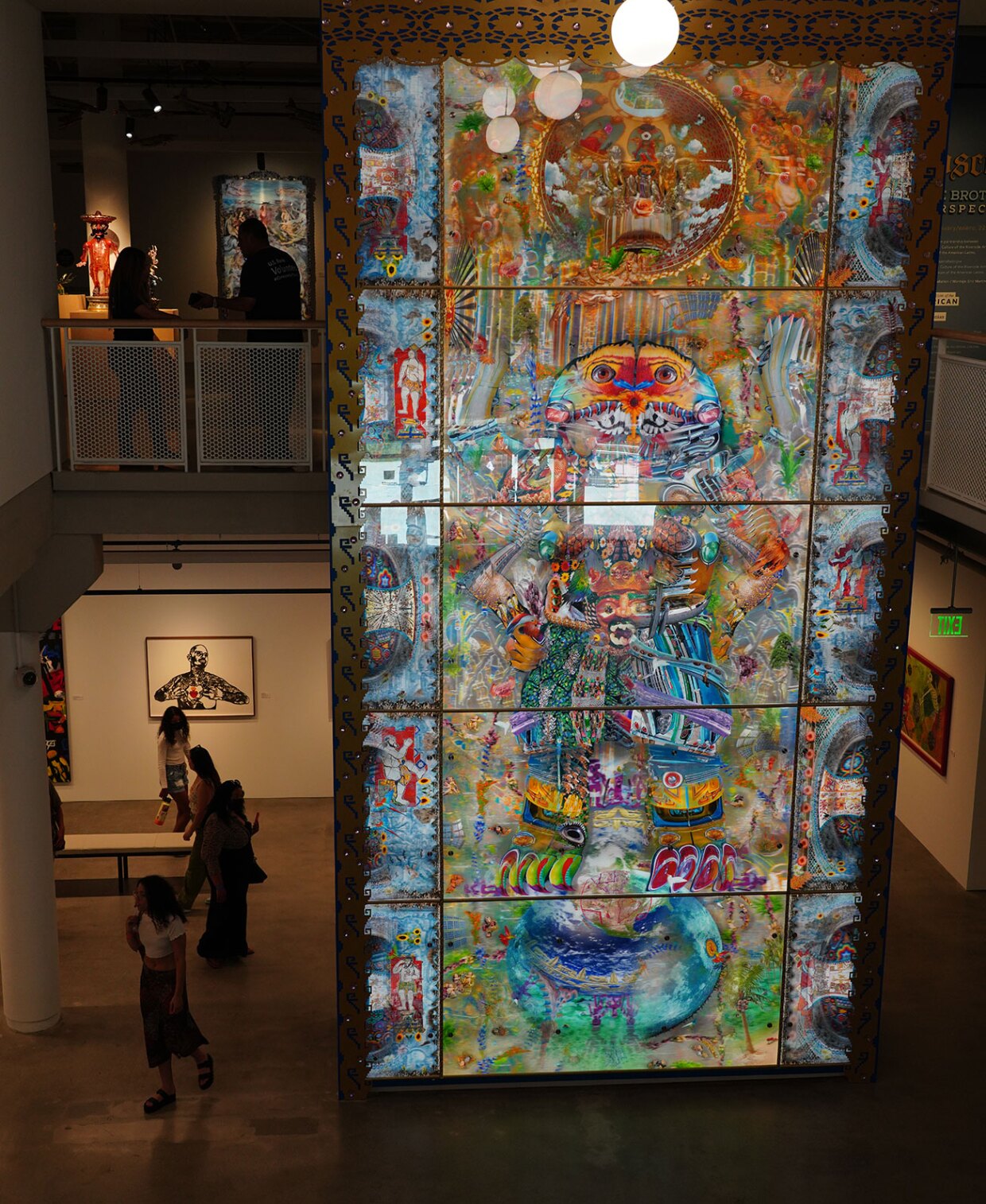
Q: You've also installed a two-story mural. It's lenticular, so the image changes as you move around it. Tell us about this one.
Jamex: Yeah, when the architects first approached us about the possibility of installing a permanent piece to the museum, they had decided to open up an atrium because the museum, you might know, it used to be the central library in Riverside, so it's got library-style floors. So when they opened this atrium, it magically became a museum. And it gave us the opportunity to make a two-story-high lenticular piece. The lenticular piece that we decided to make is an homage to an Aztec deity, called Coatlicue.
Maybe Einar can tell you more about the lenticular process.
Einar: Yeah, so the lenticular process is an old technology that uses plastic lens or acrylic lens that has little lines in it. And then you take two images and cut half of it out in the same lines and interlace another image. And with that lens, what it does is it acts like a prism where you can see one image and as you move it sideways, you'll see the other image.
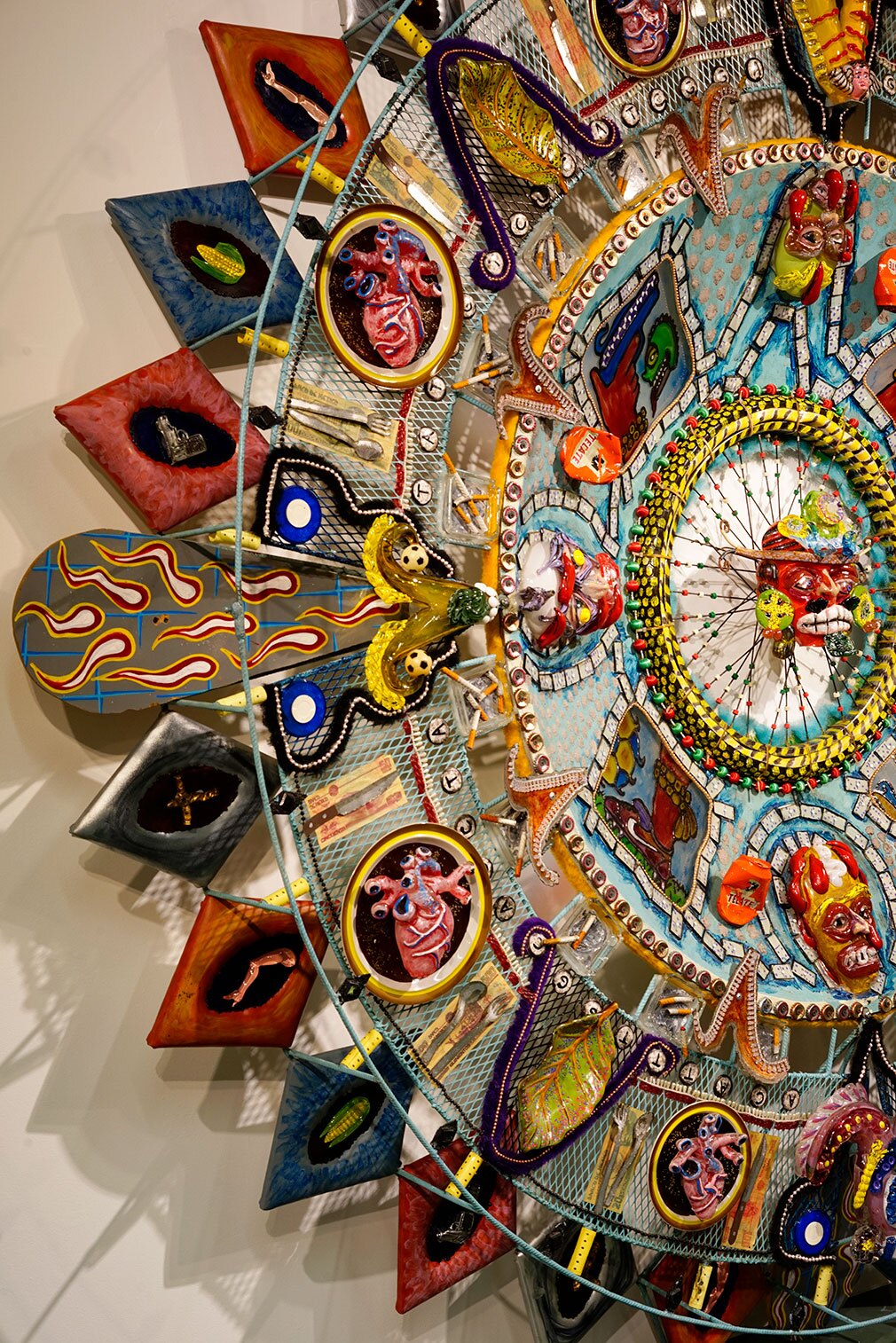
Q: And do you remember the first time you met Cheech and he showed interest in your artwork?
Einar: One of the large installation pieces featured called "Oxymodern," he was interested in it, and he was taping "Nash Bridges" up in San Francisco, living in San Francisco. And we drove our VW Bus up there with the piece, assembled it in his living room, and he said, "Oh, great, I'll take it." And then we proceeded to go out to lunch and found him to be very affable, very, you know — interestingly, a very funny guy.
Q; And what role does humor play in your art? How do you approach that?
Jamex: Humor is hugely important in our artwork. Almost every piece has an angle that's humorous. We see humor as the hook that brings — reels you in and helps you take your guard down and be more in the moment. I think that's part of our personality. And it's interesting because when we first came to the states our introduction to Cheech Marin was through his records with Cheech and Chong — 'Big Bambu.' The first week that we're here in the States, we're hearing them with our cousins, and that was our indirect introduction to Chicano culture for us.
Q: So your work has been shown in galleries and museums across the world. What makes the Cheech unique?
Einar: Well, The Cheech is the first self-proclaimed Chicano Museum. And we've shown as Mexicans, as Americans, as border artists, and in this case, as Chicano artists. So it is unique in that way and in the way that it's going to redefine what all of these different surnames mean. Because the Mexican American parts of the country don't use the word Chicano, particularly — there's third generation Mexican in Chicano, for instance. So it will be really interesting to see how this museum sort of broadens some of these definitions and becomes the inclusive museum.
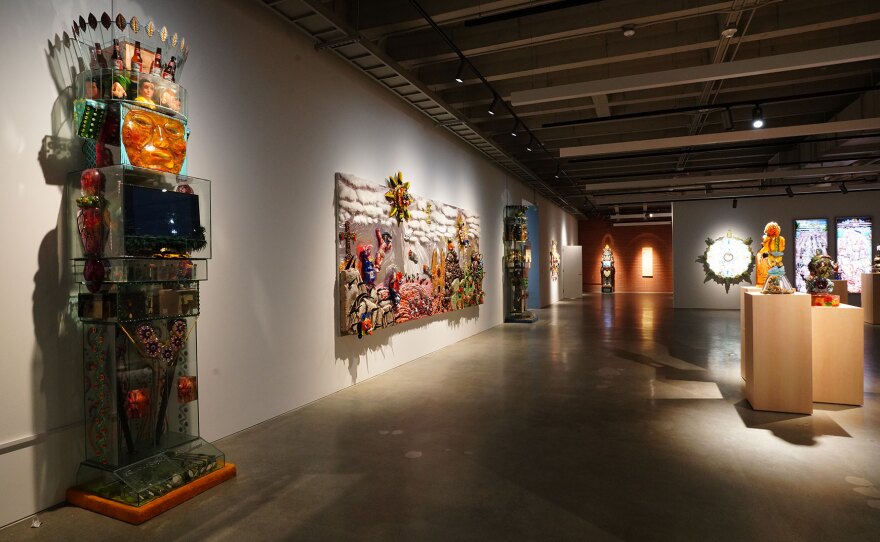
Q: So a lot of San Diegans might know you from the huge, colorful installation in the downtown library's main elevator. Would you tell us a little bit about that work as well?
Jamex: We have made eight large public art projects. The library downtown is one of my favorite ones, because it was a sweet opportunity. We were given the elevator shaft to engage, and we decided to make a series of boxes that act like dioramas as you go up in the elevator, that they can tell a little bit of a story about ascending through learning and knowledge. And that was the first time that we installed lenticulars in a public art space. We also have a large lenticular and another public art sculpture at San Ysidro Public Library. A little out of the way, but it's worth visiting, too.

Q: And you both are cross-border artists. You work in the San Diego border region. What role would you say the border plays in your artwork?
Jamex: I'm actually talking to you from our studio in Baja and Einar from our place in San Diego. So, yes, we are completely cross-border. Later on today, we're both going to work in the studio in Baja. I think that is crossing the border, and the reality that we live crossing the border back and forth is probably the most important thing that feeds our work.
Einar: So as we see ourselves as border artists, probably it's the most comfortable hat that we wear in terms of all the definitions — because we're also glass artists and many people know us for our blown glass sculpture. So out of all of them, I think that's the one that describes us the best because the border informs our work quite a bit. It is the ability to see the other place as other. In other words, like a fish tank, you're looking at it from the other side. And I think it's a way to see your own culture that you're living in with a different perspective.

